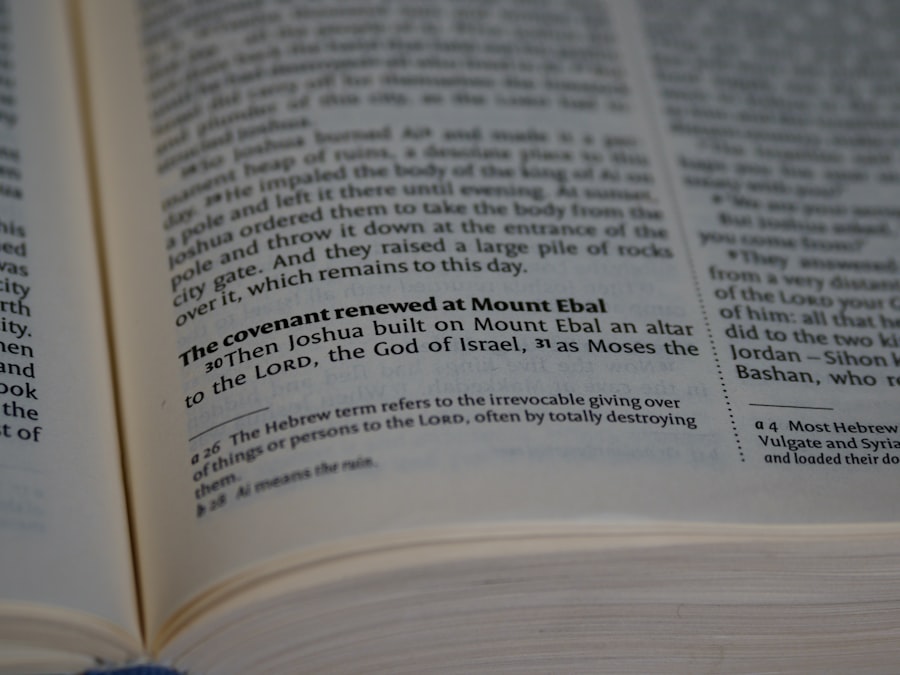Saddam Hussein’s ascent to power is a tale marked by ambition, cunning, and a relentless pursuit of authority. Born in 1937 in a small village near Tikrit, Iraq, he grew up in a tumultuous environment that shaped his worldview.
Raised by his mother and uncle, Saddam was exposed to the political turmoil of Iraq, which was under British control at the time. This backdrop of instability would later fuel his desire for power and control. In the 1950s, Saddam became involved in the Ba’ath Party, a political organization that espoused Arab nationalism and socialism.
His political career began to take shape when he participated in a failed assassination attempt against the Iraqi Prime Minister, Abd al-Karim Qasim, in 1959. Following the successful coup that brought the Ba’ath Party to power in 1968, Saddam quickly rose through the ranks, becoming the de facto leader of Iraq. His ability to navigate the treacherous waters of Iraqi politics, combined with his ruthless tactics, allowed him to consolidate power and eliminate rivals.
By the time he officially became president in 1979, Saddam had established himself as a formidable force in both Iraqi and regional politics.
Key Takeaways
- Saddam Hussein’s rise to power was marked by political maneuvering and ruthless tactics, including the elimination of rivals and dissenters.
- The brutal reign of Saddam Hussein was characterized by widespread human rights violations, including torture, executions, and the use of chemical weapons against civilians.
- The invasion of Kuwait in 1990 sparked international conflict and led to a coalition of countries launching a military campaign to expel Iraqi forces from Kuwait.
- The Gulf War resulted in a devastating defeat for Iraq, leading to economic sanctions and the destruction of infrastructure.
- The hunt for weapons of mass destruction in Iraq led to false claims and international tensions, ultimately contributing to the invasion of Iraq in 2003.
The Brutal Reign: Human Rights Violations and Atrocities
Saddam Hussein’s rule was characterized by widespread human rights violations that left an indelible mark on Iraq’s history. His regime was notorious for its brutal suppression of dissent, employing tactics such as torture, imprisonment, and execution to silence opposition. The infamous security apparatus he established operated with impunity, targeting not only political adversaries but also ordinary citizens who dared to speak out against the government.
The fear instilled in the populace was palpable, as many lived in constant anxiety over the possibility of being arrested or worse. One of the most egregious examples of Saddam’s brutality was the Anfal campaign against the Kurdish population in the late 1980s. This systematic genocide resulted in the deaths of thousands of Kurds and the destruction of entire villages.
Chemical weapons were used indiscriminately, leaving a legacy of suffering that continues to affect Kurdish communities today. Additionally, the regime’s actions during the Iran-Iraq War further exemplified its disregard for human life, as both soldiers and civilians were subjected to horrific conditions and violence. The international community largely turned a blind eye to these atrocities at the time, allowing Saddam to continue his reign of terror with little accountability.
The Invasion of Kuwait: Sparking International Conflict

In August 1990, Saddam Hussein made a fateful decision that would alter the course of history: he ordered the invasion of Kuwait. Citing economic grievances and historical claims over the territory, Saddam sought to expand Iraq’s influence and control over its oil-rich neighbor. The invasion was swift and brutal, leading to the swift occupation of Kuwait City and the establishment of Iraqi control over the country.
The international response was swift and united. A coalition led by the United States formed to confront Saddam’s aggression, culminating in a series of economic sanctions aimed at crippling Iraq’s economy.
The United Nations Security Council passed resolutions demanding Iraq’s withdrawal from Kuwait, setting the stage for military intervention. As tensions escalated, it became clear that Saddam’s actions had not only provoked regional instability but had also drawn the ire of global powers determined to uphold international law and sovereignty.
The Gulf War: A Devastating Defeat for Iraq
| Metrics | Data |
|---|---|
| Duration | August 2, 1990 – February 28, 1991 |
| Location | Kuwait, Iraq, Saudi Arabia |
| Result | Coalition victory, liberation of Kuwait |
| Casualties | Coalition: 292 killed, 776 wounded Iraq: 20,000–35,000 killed, 75,000 wounded |
| Financial Cost | Estimated 61 billion for the coalition |
The Gulf War erupted in January 1991 as coalition forces launched Operation Desert Storm to liberate Kuwait from Iraqi occupation. The military campaign showcased advanced technology and strategic prowess, overwhelming Iraqi defenses within weeks. The coalition forces, composed of troops from various nations, executed a well-coordinated assault that decimated Saddam’s military capabilities.
The war ended with a decisive victory for the coalition but left Iraq in ruins. The aftermath of the Gulf War was catastrophic for Iraq. The country faced extensive destruction of its infrastructure, economic sanctions that crippled its economy, and a humanitarian crisis that affected millions of civilians.
Saddam’s regime emerged weakened but still intact, leading to a period of intense suffering for the Iraqi people. The war also set the stage for ongoing tensions between Iraq and Western powers, as resentment towards foreign intervention simmered beneath the surface.
The Hunt for Weapons of Mass Destruction: False Claims and International Tensions
In the years following the Gulf War, suspicions regarding Iraq’s possession of weapons of mass destruction (WMD) became a focal point for international relations. The United States and its allies accused Saddam Hussein of developing chemical, biological, and nuclear weapons capabilities, leading to heightened tensions between Iraq and Western nations. Despite repeated inspections by United Nations weapons inspectors, no substantial evidence was found to support these claims.
The insistence on WMD as a justification for military action culminated in the 2003 invasion of Iraq by a U.S.-led coalition. This controversial decision was based on assertions that Saddam posed an imminent threat due to his alleged stockpiles of WMDs. However, as history would reveal, these claims were largely unfounded, leading to widespread criticism and accusations of deception by Western governments.
The failure to locate any WMDs after the invasion raised questions about intelligence practices and accountability on an international scale.
The Capture and Trial: Saddam Hussein’s Last Days

Saddam Hussein’s reign came to an abrupt end when he was captured by U.S. forces in December 2003 during a raid near Tikrit. His capture marked a significant turning point in Iraq’s tumultuous history, as it symbolized the collapse of his authoritarian regime.
Following his arrest, Saddam was subjected to a highly publicized trial that drew global attention. Charged with crimes against humanity for his role in various atrocities committed during his rule, he faced a legal process fraught with controversy. The trial itself was marred by allegations of bias and irregularities, raising questions about its legitimacy.
Despite these concerns, Saddam maintained a defiant posture throughout the proceedings, often using the courtroom as a platform to voice his political beliefs and challenge his captors. In November 2006, he was sentenced to death by hanging for his role in the 1982 massacre of Shiite villagers in Dujail. His execution on December 30, 2006, marked a grim conclusion to his tumultuous life but left many unresolved issues regarding justice and accountability in post-Saddam Iraq.
The Impact on Iraqi Society: Lingering Effects of Saddam’s Rule
The legacy of Saddam Hussein’s rule continues to reverberate throughout Iraqi society long after his demise. His authoritarian governance created deep-seated divisions within the country that have persisted into contemporary times. The pervasive culture of fear and repression fostered an environment where trust among citizens eroded significantly; many were left wary of their neighbors and even family members due to years of surveillance and suspicion.
Moreover, Saddam’s regime exacerbated existing sectarian tensions between Sunni and Shiite communities in Iraq. His favoritism towards Sunni Arabs led to systemic discrimination against Shiites and Kurds, creating an atmosphere ripe for conflict. Following his removal from power, these divisions erupted into violence as various factions vied for control in a post-Saddam landscape.
The societal scars left by his rule are evident in ongoing sectarian strife and political instability that continue to plague Iraq today.
Saddam Hussein’s regime played a pivotal role in deepening sectarian divisions within Iraq, particularly between Sunni and Shiite communities. His government favored Sunni Arabs in key positions of power while systematically marginalizing Shiites and Kurds. This favoritism not only fueled resentment among Shiite populations but also laid the groundwork for future conflicts that would erupt after his fall from grace.
The aftermath of Saddam’s rule saw sectarian violence escalate dramatically as various groups sought retribution for years of oppression. Militias emerged on both sides, leading to brutal clashes that resulted in thousands of deaths and widespread displacement. The power vacuum created by his removal further exacerbated these tensions, as competing factions struggled for dominance in a fractured political landscape.
The sectarian strife that emerged during this period has had lasting implications for Iraq’s stability and governance.
The Legacy of Fear: How Saddam Hussein’s Rule Continues to Haunt Iraq
The legacy of fear instilled by Saddam Hussein’s regime continues to haunt Iraq long after his departure from power. The pervasive atmosphere of intimidation created by state-sponsored violence has left deep psychological scars on the Iraqi populace. Many citizens still grapple with trauma stemming from years spent under an oppressive regime where dissent was met with brutal consequences.
This legacy manifests itself in various ways within Iraqi society today. Distrust among communities remains high as individuals navigate their relationships with one another amidst lingering fears of surveillance or reprisal. Additionally, many Iraqis continue to grapple with feelings of helplessness when confronted with ongoing violence and instability in their country.
The haunting memories of Saddam’s reign serve as a reminder of how authoritarianism can shape societal dynamics long after its fall.
The Aftermath: Rebuilding Iraq in the Wake of Saddam’s Reign
In the wake of Saddam Hussein’s rule, Iraq faced monumental challenges in its efforts to rebuild and redefine itself as a nation. The destruction wrought by years of war and repression left infrastructure in tatters while social cohesion frayed under pressure from sectarian divisions. Efforts at reconstruction were complicated by ongoing violence and political instability that plagued the country during this transitional period.
International assistance poured into Iraq following Saddam’s ousting; however, rebuilding efforts were often hampered by corruption and mismanagement within both local governance structures and foreign aid initiatives. As various factions vied for power amid an uncertain political landscape, progress remained slow and uneven across different regions of the country. Despite these challenges, many Iraqis remained hopeful for a brighter future—one free from tyranny—while grappling with the complexities inherent in forging a new national identity.
Lessons Learned: The Notorious Legacy of Saddam Hussein and Its Relevance Today
The notorious legacy of Saddam Hussein serves as a cautionary tale about the dangers posed by authoritarian regimes and unchecked power. His rise to prominence illustrates how political ambition can lead individuals down dark paths marked by oppression and violence against their own citizens. Furthermore, his reign underscores the importance of accountability mechanisms within governance structures to prevent abuses of power from taking root.
In contemporary discussions surrounding governance and human rights globally, lessons drawn from Saddam’s rule remain relevant today. As nations grapple with issues related to authoritarianism, sectarianism, and human rights violations worldwide—whether through direct intervention or diplomatic engagement—the need for vigilance against tyranny remains paramount. Ultimately, understanding this complex legacy is crucial not only for Iraq but also for fostering global awareness about safeguarding democracy and protecting human rights across borders.
Saddam Hussein, the former President of Iraq, was a controversial figure known for his authoritarian rule and involvement in various conflicts, including the Iran-Iraq War and the Gulf War. His regime was marked by widespread human rights abuses and the suppression of political dissent. For those interested in learning more about Saddam Hussein and other intriguing historical facts, you might find this related article insightful. It provides a broader context on historical events and figures, offering a deeper understanding of the complexities surrounding his leadership and its impact on the region.
WATCH NOW! How the US Hunted and Captured Saddam Hussein: The Untold Story of Operation Red Dawn
FAQs
What were Saddam Hussein’s early life and rise to power?
Saddam Hussein was born on April 28, 1937, in the town of Al-Awja, near Tikrit, in Iraq. He joined the Ba’ath Party in 1957 and quickly rose through the ranks, eventually becoming the president of Iraq in 1979.
What were some of Saddam Hussein’s most notorious actions as a leader?
Saddam Hussein’s regime was known for its brutal suppression of political dissent, including the use of torture and execution. He also initiated the Iran-Iraq War in 1980 and invaded Kuwait in 1990, leading to the Gulf War.
What was the outcome of the Gulf War for Saddam Hussein?
The Gulf War resulted in a decisive defeat for Saddam Hussein’s forces, leading to the imposition of economic sanctions and a no-fly zone over Iraq. This significantly weakened his regime and led to ongoing conflicts with the United Nations.
What led to Saddam Hussein’s eventual capture and trial?
Saddam Hussein was captured by U.S. forces in December 2003, hiding in a small underground bunker near his hometown of Tikrit. He was subsequently tried by the Iraqi Special Tribunal and found guilty of crimes against humanity, leading to his execution in 2006.
What is Saddam Hussein’s legacy?
Saddam Hussein’s rule was marked by widespread human rights abuses, regional conflicts, and the devastation of Iraq’s economy and infrastructure. His legacy continues to impact the country and the wider Middle East region to this day.
